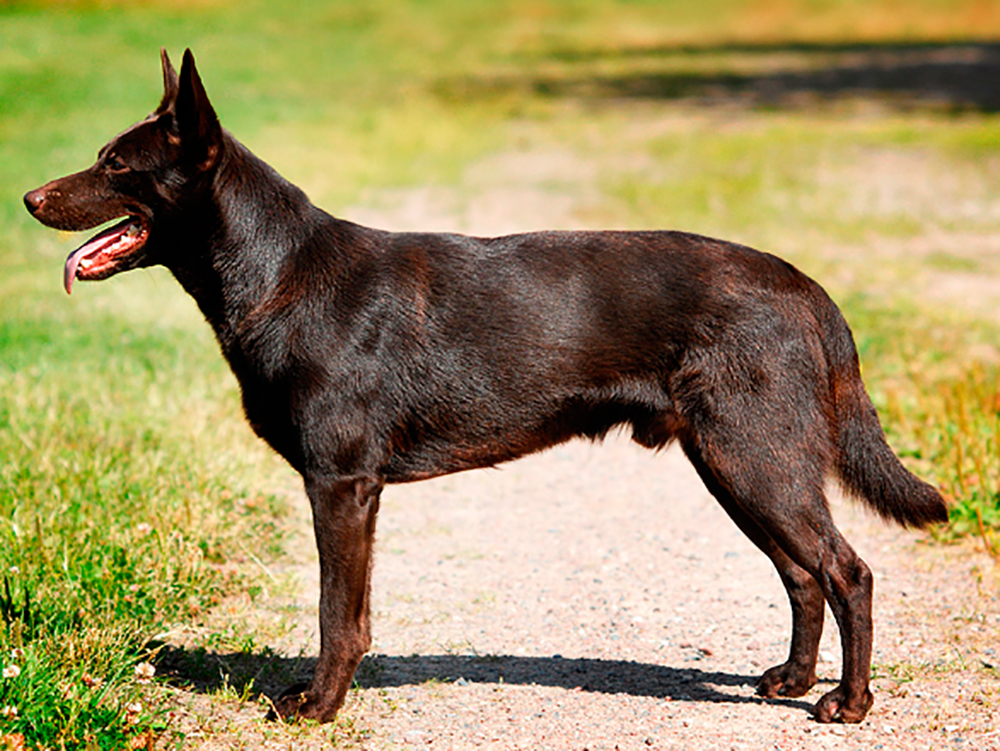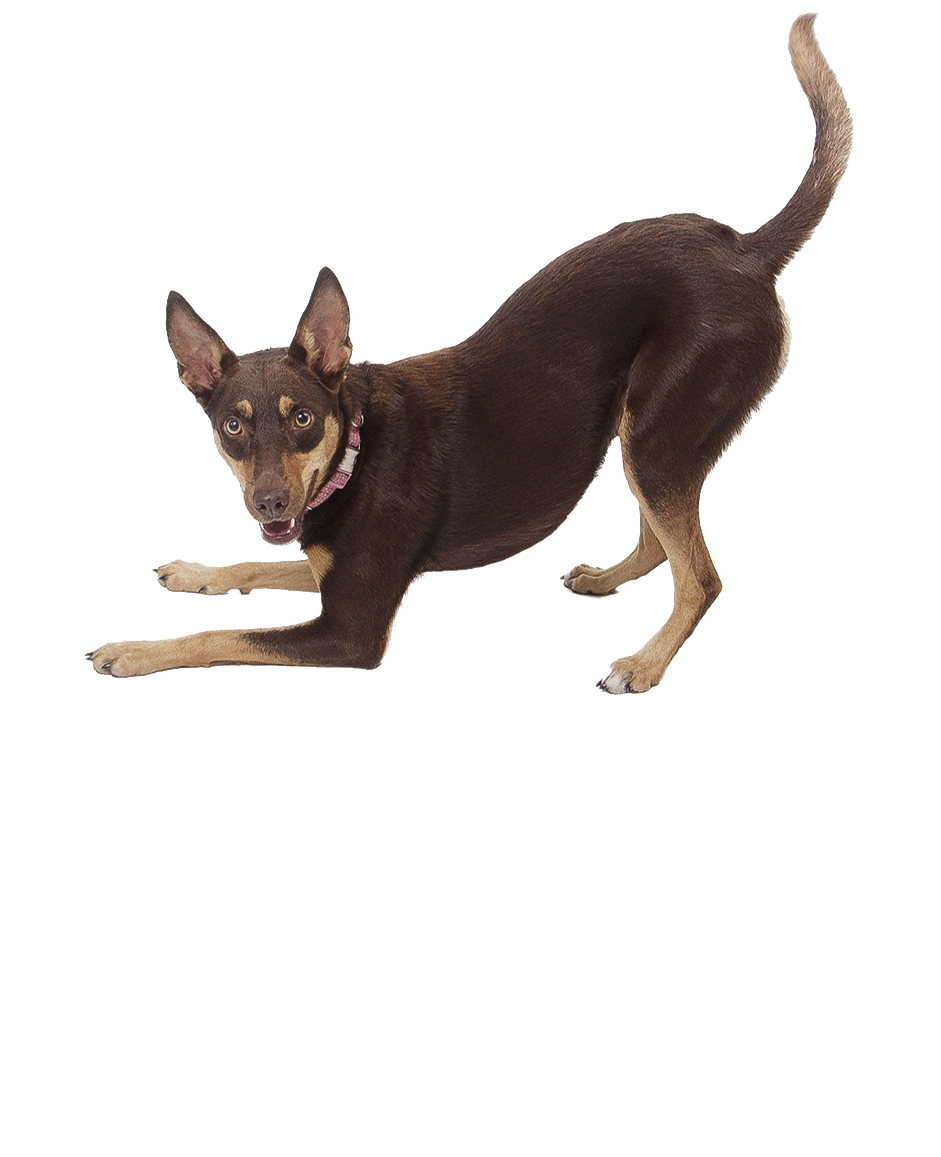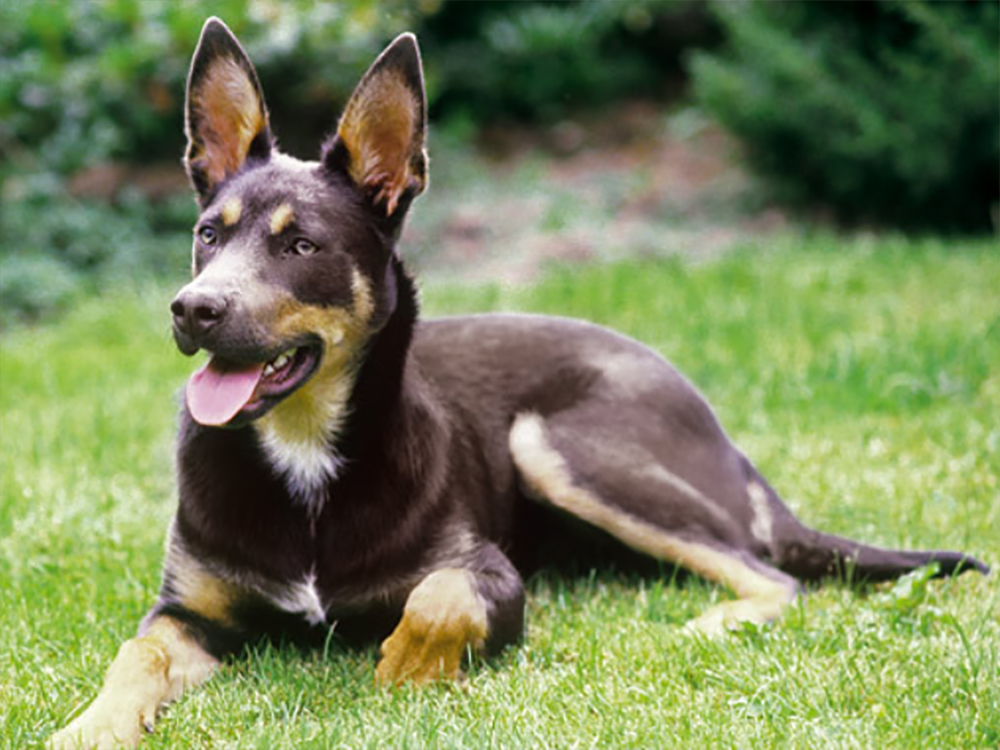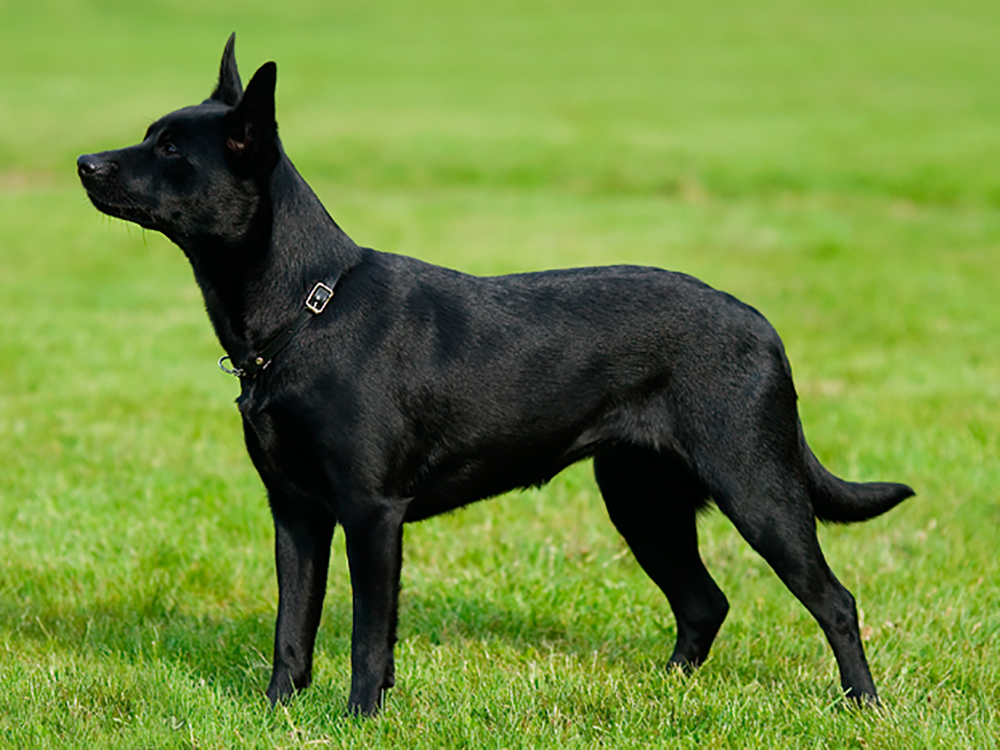
Australian Kelpie Breed Pictures
Vital Breed Stats
| Height: | 46 - 51 cm M | 43 - 48 cm F |
| Weight: | 18 - 23 kg M | 14 - 21 kg F |
| Life Expectancy: | 13 - 15 years |
| KC Registered: | No |
Breed Characteristics
| Size: |  |
| Grooming: |  |
| Exercise Level: |  |
| Trainability: |  |
| Barking Level: |  |
| Good with Children: |  |
| Good with other pets: |  |
| Affectionate: |  |
| Protective: |  |
| Cost to Keep: |  |
Give a thumbs up if you love the Australian Kelpie

0
More About the Breed
History
The Australian Kelpie, also called kelpie, Barb, or farmer dog was created in the 1870s. The breed’s origins are unclear; however, it is believed that he is a descendant of dogs imported from Scotland.
Because of the booming sheep business in Australia, herding dogs became a great need. Various breeds from the UK were sent to Australia including black collies. They were cross-bred with other dogs along with wild dingoes. As a result, the Australian Kelpie was born.
The new breed was capable of withstanding the country's hot climate and navigate its rough terrains. Due to his hard-working and independent nature, he is greatly prized by ranchers. Later on, the Australian Kelpie was exported to other countries around the globe.
Appearance
The Australian Kelpie is a mid-sized dog with a sturdy physique and muscular legs. He has a long narrow head with dark eyes. His nose can be self-coloured, dark, or brown depending on his coat colour. The Kelpie is broad-chested and has a low-set tail and arched toes. With strong and firm hindquarters, he can turn and leap quickly when herding.
The Kelpie possesses a thick and short weather-resistant double coat. The outer coat is coarse, straight, and flat to protect him from rain. His undercoat is softer and tends to grow denser during the winter season to shield him from the cold. The Kelpie's coat comes in blue, brown, black, chocolate, fawn, red, black, or tan.
Grooming
Temperament
Intelligence
Training the Australian Kelpie can be quite challenging as he is independent and headstrong. Therefore, the breed is not recommended for first-time owners. When training the kelpie, you must be firm and consistent, but be gentle as well. He is a sensitive dog and scolding him will only lead to disobedience. Use positive reinforcement to keep his enthusiasm for learning.
Although training him can be difficult, the result will be worth it. He is very smart and a quick learner, thus, he can execute almost any command or task. Since the kelpie is a workaholic and an independent dog, he is capable of working with minimal supervision. He excels at herding trials, agility, fly ball, flying disc games, obedience, and tracking. He can also be a great choice as a therapy dog, hearing dog, detection dog, or a search and rescue dog.
Feeding
- 2 months old - 173 g to 208 g
- 3 months old - 199 g to 252 g
- 4 months old - 211 g to 298 g
- 5 months old - 214 g to 319 g
- 6 months old - 214 g to 341 g
- 8 months old - 177 g to 305 g
- 12 months old - 219 g to 237g
- Dog weighing 14 kg can be fed 178g to 234g
- Dog weighing 20 kg can be fed 232g to 305g
Health
- Cryptorchidism
- Hip Dysplasia
- Luxating Patella
- Progressive Retinal Atrophy
- Collie Eye Anomaly
- Cerebellar Abiotrophy
Exercise
The Australian Kelpie is an extremely energetic dog. He fits well with active families and not suited for apartment living. Lack of exercise may lead him to look for his source of fun, which leads to destructive behaviour such as chewing or digging. With that said, he should not be left alone for a long period or he will get restless and bored.
Two hours of walking or jogging will suffice. Consider taking a short walk in the morning and a long one in the afternoon. Make sure he gets enough off-lead time as much as possible. Allow him to roam and run around in dog parks or open spaces. If you have a garden, make sure that the fence is tall and sturdy enough to prevent him from climbing out.
Cost of Ownership
Purchasing an Australian Kelpie will cost you about £300 and £400. Food expenses cost £20–£30 a month or £240–£360 annually. Other necessities including lead, dog bed, and toys can cost £150–£200. As for medical care costs, you might need to pay over £1000 annually for regular vaccinations, check-ups, and spaying or neutering. Getting a pet insurance for your dog will require you to pay £50–£120 a month. Keep in mind that financial stability plays a big factor in properly caring for your furry friend. Make sure to consider this before you welcome a new dog into the family.
Is an Australian Kelpie Right for You?
- The Australian Kelpie is a hardworking and independent dog.
- He can be stubborn, thus he needs firm and consistent yet gentle training.
- He is fond of his family and is highly protective of them.
- Frequent socialisation is required to curb his herding instincts.
- Due to his high energy, he needs at least two hours of exercise.









